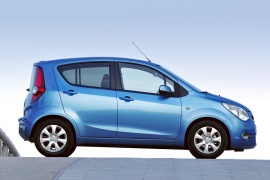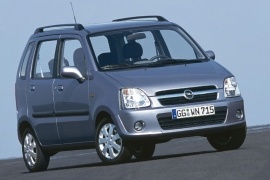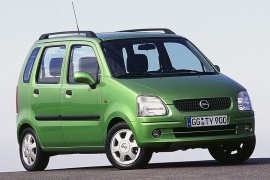OPEL Agila Models/Series Timeline, Specifications & Photos
First production year: 2000
Engines: Gasoline, Diesel
Body style: Hatchback
With a crumbling economy and an uncertain future due to the world financial crisis, Opel had high hopes for the second generation of the Agila built in cooperation with Suzuki in Hungary.
Even though it couldn't make too much money out of it, the price made it attractive for customers who needed a vehicle where a family could fit. Moreover, the Agila's fuel efficiency was excellent, especially for those times. So, the project between GM and Suzuki move on, resulting in the siblings Opel/Vauxhall Agila and Suzuki Splash. All of them were built in Hungary.
The urban mini-monocab design concept showed a vehicle fit for tight urban areas. Its short, 3.74 m (12.2 ft) length allowed the car to be parked in tight spots easier than most other vehicles on the market. Moreover, its tall greenhouse and generously-sized doors eased the ingress and egress of the vehicle. At the front, the Agila sported very big headlights, swept back toward the car's A-pillar. At the back, the vertical drop of the tailgate was sweetened by angular-shaped taillights that flanked the vehicle.
Inside, the Agila offered enough room for four adult-sized occupants. At the front, the two bucket seats provided enough comfort for their occupants. On the dashboard, in front of the driver, the automaker installed an instrument cluster with a big speedometer placed in the middle and several other lights. On the center stack, Opel installed a CD player and the HVAC control panel. In addition, an extension of the center stack hosted the gear stick. On the rear bench was room enough for two passengers, but the trunk on the rearmost side of the car was tiny.
Under the hood, the two carmakers (GM and Suzuki) decided to give the car a choice of three engines, both gasoline and turbo-diesel. The oil burner was carried over from Fiat.
Opel tried to gain the small segment with a vehicle fit for the narrow Japanese streets and built it together with Suzuki in Hungary.
Opel and Suzuki joined their forces and produced the Agila/Wagon R in Europe. It was a bold idea, but the customers were not that happy. Even though that, on paper, it had all the necessary to meet the Europeans needs, it lacked the design that could make it a sales-winner.
The biggest problem was with the design. With a short length and a tall construction, the Agila was far to be considered handsome by the European customers. A flat and tall fascia with an almost non-existent front overhang was very useful in tight parking spots. In the back, a well-placed mirror could help the driver see the rear bumper, but that was not even on the options list.
The interior was minimalist, with a two-level dashboard, which featured a lower shelf for both front passengers. Opel supplied the Agila without a stereo unit to the dealers to install one and gain some extra money from the small MPV. On the base trim level, there were four cranked windows and no air-conditioning. Only the full-options versions received with power windows and an AC unit.
Under the hood, Opel installed a choice of four engines: three gasoline and a turbo-diesel. Fiat supplied the latter as part of an agreement with General Motors. The only transmission available was a five-speed manual.
A rebadged version of the Suzuki Wagon R-Wide, the Opel Agila was a city car produced by the German carmaker from 2000 to 2014.
The first generation was released in 2000 and was sold in over 444,000 units worldwide.
While the exterior design was rather dull, the Opel Agila was mostly bought for its practicality. The small MPV was ideal for crowded city transportation thanks to the low fuel consumption it offered. While most city cars were offered in a 3-door configuration, the Agila’s extra 2 doors enhanced its practicality.
Inside, the cabin was fitted with good quality materials. Everything was well laid out, the controls were intuitively placed and easy to action, while the black on white gauges were easy to read. The cloth upholstery was available in different colors to personalise the Agila according to the buyer’s taste.
While practical within city limits, the Agila wasn’t at home on twisty roads or highways. Due to its unusual height, the car’s stability was affected and body roll was present.
The Opel Agila could be equipped with a 1.0-liter or a 1.2-liter gasoline engine, the latter developing 75 hp, just enough to deserve the nameplate of Agila (“agilis” in Latin, agile). Both units were mated with a 5-speed manual transmission.


